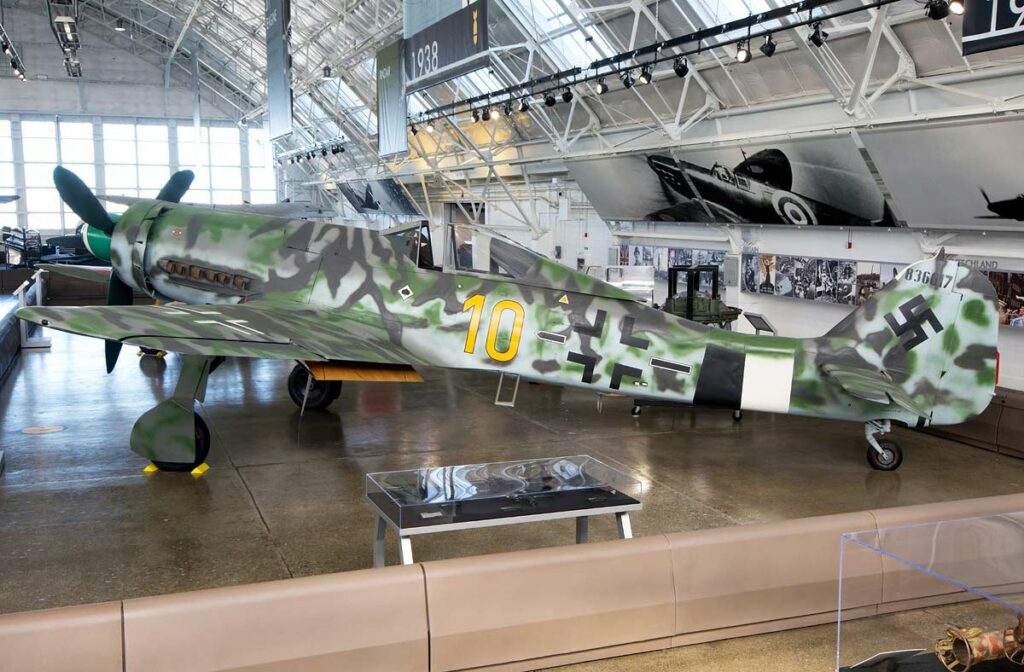The Focke-Wulf Ta 152, a high-altitude German WWII fighter, excelled in speed and agility with advanced armament and engineering.
The Focke-Wulf Ta 152 was a pinnacle of German fighter design during World War II, known for its exceptional high-altitude performance. This article aims to explore the development, design, performance, and combat usage of the Ta 152, highlighting its role in the Luftwaffe’s late-war efforts.
History of the Development of the Focke-Wulf Ta 152:
In the context of WWII, Germany recognized the need for a superior high-altitude fighter aircraft to counter the increasing Allied air superiority. The Focke-Wulf Ta 152, developed by Focke-Wulf Flugzeugbau AG under the leadership of Kurt Tank, was the answer to this requirement.
The development of the Ta 152 was a strategic response to the challenges posed by advanced Allied aircraft. The program aimed to create a fighter that could operate effectively at high altitudes while maintaining agility and firepower. The project was initiated in the early 1940s, with the first prototype taking flight in 1944.
Design of the Focke-Wulf Ta 152:
The Ta 152 featured an innovative design for its time. It had a length of 10.82 meters (35.5 feet) and a wingspan of 14.44 meters (47.4 feet). Constructed primarily from light alloys, it featured a streamlined, aerodynamically efficient design.
Powered by a Junkers Jumo 213E engine, the Ta 152 was designed for high-altitude performance. It was armed with one 30mm MK 108 cannon and two 20mm MG 151/20 cannons, providing formidable firepower.
The design of the Ta 152 offered several advantages, including superior speed, agility at high altitudes, and advanced armament. However, its complexity posed challenges in production and maintenance, particularly during the final stages of the war.

Performance of the Focke-Wulf Ta 152:
The Ta 152’s Junkers Jumo 213E engine, producing approximately 2,050 horsepower, enabled a top speed of about 760 km/h (472 mph) and a service ceiling of 14,800 meters (48,556 feet). Its range was around 2,000 kilometers (1,243 miles) with drop tanks.
In comparison with contemporaries like the American P-51 Mustang and the British Spitfire, the Ta 152 was superior in high-altitude performance but had limitations in range and versatility.
Military Use and Combat of the Focke-Wulf Ta 152:
The Ta 152’s heavy armament made it effective in air superiority and intercept roles. It saw limited use in the late stages of WWII, primarily in defense against Allied bombing raids.
The Ta 152 faced competition from various Allied fighters and was a formidable adversary at high altitudes. However, its deployment was limited by production constraints and the deteriorating war situation for Germany.
The Ta 152 was not exported or used post-WWII, as its production ended with the war. It was eventually replaced by the emergence of jet fighters.
The Focke-Wulf Ta 152 represented a significant advancement in WWII fighter aircraft, showcasing Germany’s technical ingenuity in aviation. Although its impact was limited by late introduction and production challenges, the Ta 152 demonstrated remarkable high-altitude performance and firepower. Its legacy in military aviation history underscores the importance of innovation and adaptation in aircraft design during periods of rapid technological advancement and strategic necessity.
Back to the Warbirds section.